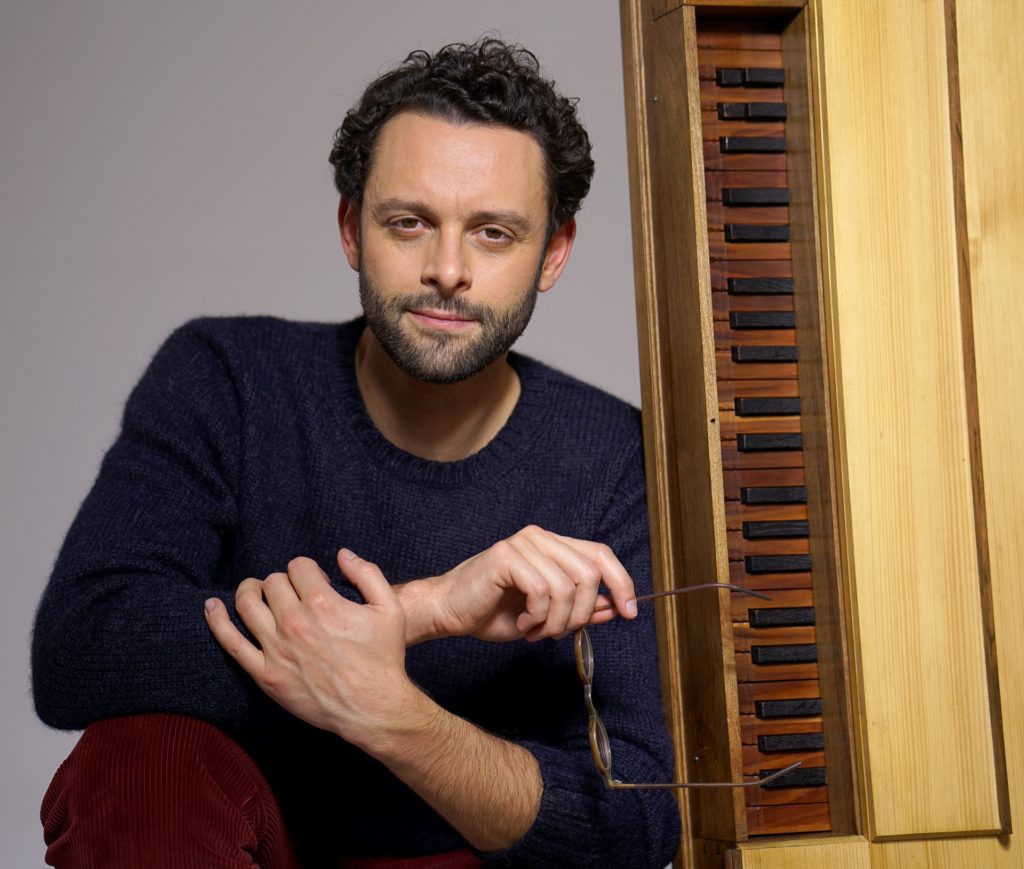Benjamin Alard’s Music Feast of the Bach Trio Sonatas
On a typical all-Bach organ recital, an audience would be fortunate to hear one of J. S. Bach’s elegant Trio Sonatas. But in Benjamin Alard’s bracing recital Tuesday, the French keyboard virtuoso performed all six of the Bach Trio Sonatas for solo organ, BWV 545-530, for the San Diego Early Music Society at St. Brigid’s Catholic Church in Pacific Beach.
According to Johann Forkel, Bach’s most reliable early biographer, Bach completed these elegant masterpieces for his oldest son Wilhelm Friedemann around 1729, examples of contrapuntal ingenuity that might inspire his gifted teen-aged offspring to carry on the family’s musical traditions.But history seldom follows a straight line, and although Wilhelm Friedemann proved a brilliant improvisor at the organ, he lacked the discipline to commit his best work to pen and paper, and his musical legacy remains modest at best. Ironically, his younger brother Carl Philipp Emanuel gained acclaim and plum positions by abandoning his father’s musical style and adopting the far less complex style galant that took center stage in Europe in the decades following J. S. Bach’s demise.
Alard’s fleet technique, elegant articulation, and bold, colorful organ registrations on St. Brigid’s Baroque-styled Ott pipe organ combined to provide a compelling, nonpareil experience of the six Trio Sonatas. Too many organists perform these Bach Trio Sonatas circumspectly with light, clear registrations chosen to preserve the contrapuntal clarity of these works, but Alard treated the Trio Sonatas more like vibrant solo concertos, choosing rich, reedy registrations that made the final movement of each sonata vibrant and even at times amusingly raucous. I particularly enjoyed his surly arabesques in the finale of the D Minor Trio Sonata, BWV 527, and his aggressive but effective ornamentation in the final movement of the C Minor Trio Sonata, BWV 527.
Hearing all six Trio Sonatas in a single recital certainly revealed the scope of Bach’s stylistic invention. While we heard ample examples of his characteristic angular themes writhing in labyrinthine counterpoint, e.g. the opening movement of the D Minor Trio Sonata and the slow movements of the G Major and E-flat Major Sonatas, the shorter, graceful themes throughout his C Major Trio Sonata, BWV 529, clearly indicated he was aware of the nascent style galant and could more than hold his own with the latest musical fashion.
To give his Trio Sonata program contrast, Alard wisely preceded each sonata with a chorale prelude from Bach’s beloved Orgelbüchlein, a treasured volume on every serious organist’s bookshelf. Alard’s elegantly detailed accounts of these pious chorale preludes, especially his rollicking account of “In dir ist Freude,” provided a welcome dollop of sorbet between the rich main course entrees of the Trio Sonatas.
This recital was presented by the San Diego Early Music Society on December 6, 2022, at St. Brigid’s Church, 4735 Cass St., San Diego, CA.

Ken Herman, a classically trained pianist and organist, has covered music for the San Diego Union, the Los Angeles Times’ San Diego Edition, and for sandiego.com. He has won numerous awards, including first place for Live Performance and Opera Reviews in the 2017, the 2018, and the 2019 Excellence in Journalism Awards competition held by the San Diego Press Club. A Chicago native, he came to San Diego to pursue a graduate degree and stayed.Read more…

